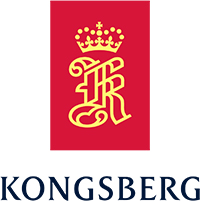Kongsberg Maritime signs 200 MNOK contract to supply propeller systems for five Spanish naval frigates

Kongsberg Maritime has secured a contract worth NOK 200 million with Spanish shipbuilder Navantia to supply propeller systems for five F110 frigates, currently in construction for the Spanish Navy. These next-generation vessels are designed to follow on from Navantia’s successful F100 frigate, bringing together state-of-the-art technologies to create a ship for the 21st century.
Destined for Anti-Submarine Warfare (ASW) operations, each vessel will be fitted with twin Kongsberg Kamewa Controllable Pitch Propeller (CPP) systems, specifically developed for minimum noise and vibration throughout the system; from the propeller blades through the shaft-line to associated equipment such as the bearings and hydraulic power unit. Vessels engaged in ASW must meet exacting requirements on Underwater Radiated Noise (URN), Cavitation Inception Speed (CIS), pressure pulses and efficiency in order to operate effectively, and Navantia’s selection process for the propellers for the F110 frigates included model scale tests at Marin in the Netherlands and at CEHIPAR in Spain to verify that the performance targets were met.
Egil Haugsdal, President, Kongsberg Maritime, says: “We are very pleased to be working with Navantia on this project. They are a top-rated company and experts in the naval shipbuilding arena. This order again confirms the shipbuilding industry’s recognition of KONGSBERG as the world leader of naval propulsion equipment.”
KONGSBERG is well placed to deliver propulsion systems to meet the most stringent specifications, thanks to the unique Kongsberg Maritime Research Centre (KHRC) in Kristinehamn, Sweden. Known worldwide for more than 80 years for its ground-breaking work in hydrodynamics and advanced designs, KHRC boasts an unparalleled capability to develop and deliver highly customised, tailor-made propeller designs for demanding projects at the leading edge of propulsion technology.
